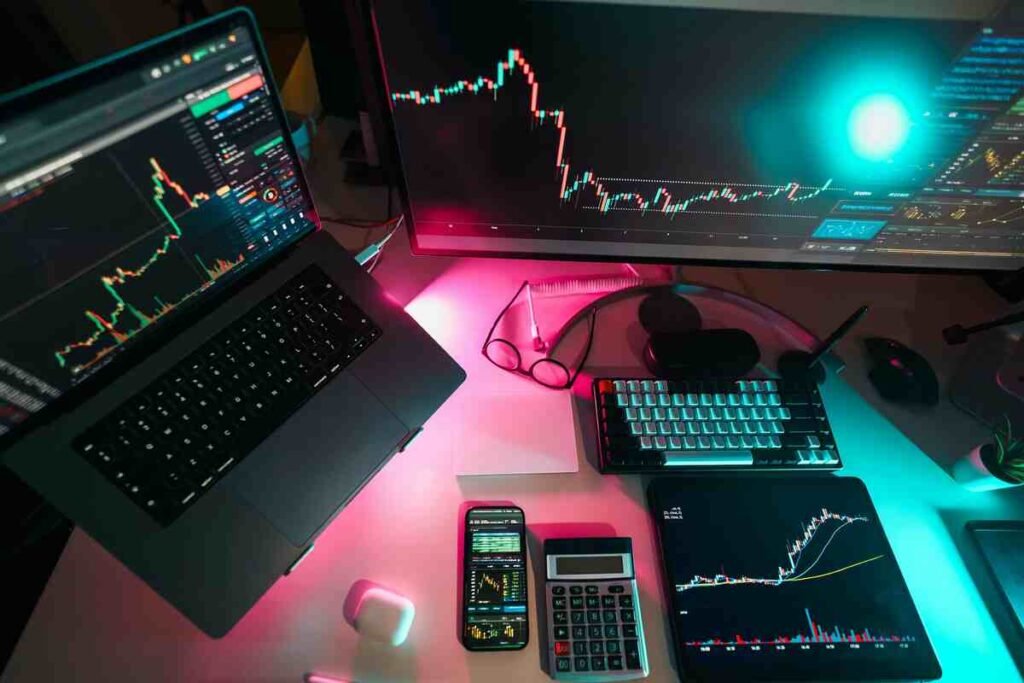Now Reading: Influencersginewuld—A New Era of Digital Influence
-
01
Influencersginewuld—A New Era of Digital Influence
Influencersginewuld—A New Era of Digital Influence

Introduction: The Rise of Influencersginewuld
In today’s fast-paced digital world, influencer marketing is evolving at an unprecedented rate. A new concept is emerging—Influencersginewuld—a term that encapsulates the shift towards a more dynamic, tech-driven, and authentic form of influence. But what exactly is Influencersginewuld, and why does it matter?
The digital landscape is no longer confined to a one-size-fits-all marketing approach. Consumers demand personalization, authenticity, and real value from the influencers they follow. The rise of micro and nano-influencers, combined with AI-driven content strategies, is paving the way for a more transparent and data-backed influencer ecosystem. Unlike traditional influencer marketing that relied heavily on celebrity endorsements, Influencersginewuld represents a new paradigm where trust, engagement, and niche expertise take precedence over mere popularity.
Moreover, social media algorithms are increasingly favoring content that drives meaningful interactions rather than passive scrolling. This means brands must rethink their influencer strategies, shifting from broad-reach promotions to highly targeted and community-driven campaigns. Influencersginewuld is a response to these changes, encouraging sustainable, long-term partnerships rather than one-off sponsored posts.
As brands strive to connect with audiences more meaningfully, traditional influencer marketing strategies are being replaced by data-driven insights, artificial intelligence, and deeper audience engagement. In this article, we’ll explore the essence of Influencersginewuld, how it is transforming digital influence, and what brands and influencers must do to thrive in this new era.
What is Influencersginewuld?
At its core, Influencersginewuld represents the convergence of influencers, innovation, and a new digital world. Unlike conventional influencer marketing, which often relied on vanity metrics like follower count, Influencersginewuld prioritizes authenticity, engagement, and technological integration. It is about fostering real connections, leveraging cutting-edge tools, and ensuring that influencer-brand collaborations are strategic, transparent, and mutually beneficial.
The emergence of Influencersginewuld signifies a shift from traditional paid promotions to value-driven content creation. Today’s consumers no longer trust influencers who promote products solely for sponsorships. Instead, they seek influencers who genuinely believe in and use the products they endorse. This shift has encouraged brands to rethink their strategies, moving toward collaborations that build trust, enhance user experience, and create meaningful impact.
Key Characteristics of Influencersginewuld:
- AI-Powered Influence: Leveraging artificial intelligence to analyze audience behavior and personalize content. AI-driven insights help influencers tailor their messages, ensuring higher engagement and better content relevance.
- Authenticity Over Popularity: Instead of focusing on follower count, this approach prioritizes genuine connections, storytelling, and credibility.
- Micro-Influencers on the Rise: Smaller, niche influencers are gaining traction due to higher engagement rates and stronger audience trust.
- Data-Driven Strategies: Using analytics and real-time insights to refine influencer campaigns, helping brands measure effectiveness and optimize their investments.
- Omnichannel Presence: Expanding beyond Instagram and YouTube to platforms like TikTok, LinkedIn, and emerging social spaces where engagement is growing rapidly.
Influencersginewuld is not just about influencers, but also about brands leveraging new-age technology to redefine digital influence. With AI-driven recommendations, blockchain for transparency, and engagement analytics, influencer marketing is becoming more sophisticated, strategic, and impactful.
The Evolution of Influencer Marketing
Influencer marketing has undergone significant changes over the years. Initially, brands sought celebrities and macro-influencers with millions of followers. However, with changing consumer behavior and rising distrust in overly promotional content, the Influencersginewuld era has introduced a more refined approach.
The early days of influencer marketing were dominated by celebrity endorsements. Brands believed that the larger the following, the better the reach. While this approach generated visibility, it often lacked genuine audience engagement. Over time, consumers became more skeptical of influencers who promoted products they had no real connection with, leading to a decline in trust and effectiveness.
Today, influencer marketing has evolved into a value-driven, data-backed industry that prioritizes authenticity, community engagement, and measurable results. With platforms like TikTok, LinkedIn, and emerging social networks gaining popularity, brands now recognize the importance of diversifying their influencer strategies. Influencersginewuld is a direct response to these shifts, leveraging technology, AI, and niche expertise to create more impactful marketing campaigns.
Another significant shift is the rise of micro and nano-influencers. Unlike macro-influencers and celebrities, these individuals have smaller but highly engaged communities. Studies suggest that micro-influencers generate up to 60% higher engagement rates than larger influencers, making them a more cost-effective and impactful choice for brands.
Furthermore, AI and data analytics now play a crucial role in influencer marketing. Brands can analyze influencer credibility, engagement metrics, and audience demographics to ensure the right fit for their campaigns. Instead of simply counting followers, marketers now focus on ROI, conversion rates, and long-term brand alignment.
Then vs. Now: How Influencer Marketing Has Changed
| Aspect | Traditional Influencer Marketing | Influencersginewuld Era |
| Focus | Reach & Popularity | Authenticity & Engagement |
| Influencers | Celebrities & Macro-Influencers | Micro & Nano Influencers |
| Metrics | Follower Count & Likes | Engagement, Retention, & Conversions |
| Technology | Basic Analytics | AI, Data Science & Personalization |
| Platforms | Instagram & YouTube | Multi-Platform Presence |
How Influencersginewuld is Changing the Game

Photo by Marvin Meyer on Unsplash
With the rise of Influencersginewuld, both influencers and brands must adapt to stay relevant. This evolution is not just about gaining followers—it’s about creating authentic, data-driven, and sustainable digital influence. Here’s how this new era is redefining the influencer landscape:
1. The Power of AI in Influencer Marketing
Artificial intelligence is revolutionizing influencer marketing. AI tools help brands identify the right influencers, track engagement metrics, and even predict campaign success. Platforms like Heepsy, Upfluence, and HypeAuditor use AI-driven insights to match influencers with brands based on audience demographics, engagement patterns, and content relevance. AI also enables brands to automate performance analysis, ensuring campaigns are optimized for maximum ROI.
Another game-changer is AI-generated content, where machine learning models assist influencers in crafting personalized, data-backed posts that resonate with their audience. This approach ensures that the right content reaches the right people at the right time.
2. The Shift Towards Authenticity
Consumers are becoming increasingly skeptical of scripted endorsements and overly promotional content. Modern audiences crave genuine connections with influencers who share real-life experiences, insights, and valuable content rather than just pushing products.
Brands are now prioritizing long-term collaborations over one-off sponsorships, ensuring a more authentic partnership that aligns with the influencer’s personal brand. Influencers who maintain transparency about sponsored posts and who genuinely use the products they promote tend to build stronger credibility and trust among their followers.
3. Micro-Influencers: The Hidden Powerhouses
The era of Influencersginewuld has seen a dramatic shift in influencer selection. Instead of relying solely on mega influencers and celebrities, brands are turning to micro and nano-influencers—those with 10K to 50K followers who have highly engaged and loyal audiences.
Studies indicate that micro-influencers generate up to 60% higher engagement rates than larger influencers. This is because their content feels more personal, relatable, and community-driven. Brands like Glossier and Gymshark have successfully built thriving communities through micro-influencers who are genuinely passionate about their products.
4. Data-Driven Decision Making
Gone are the days when influencer marketing was purely based on intuition. Now, brands use real-time data to measure influencer performance. Metrics such as:
- CTR (Click-Through Rate): Measures how many followers take action after seeing a sponsored post.
- ROI (Return on Investment): Analyzes the financial impact of influencer collaborations.
- Audience Demographics: Ensures that influencers’ followers align with the brand’s target market.
Data-driven decision-making allows brands to refine their strategies, invest in the right influencers, and maximize engagement.
5. The Multi-Platform Approach
With shifting audience behavior, Influencersginewuld encourages diversification across multiple platforms. Instead of focusing solely on Instagram or YouTube, brands are expanding their reach to:
- TikTok: Ideal for short-form, viral content that captures audience attention quickly.
- LinkedIn: A growing hub for B2B influencer marketing and professional networking.
- YouTube: Perfect for long-form, educational, and storytelling content.
- Instagram & Twitter: Platforms for brand storytelling, engagement, and real-time conversations.
Future Trends in Digital Influence

Photo by Domenico Loia on Unsplash
As Influencersginewuld continues to shape the digital marketing landscape, several emerging trends are poised to redefine how influencers and brands interact with audiences. Here are some key trends to watch:
1. AI-Generated Influencers: The Rise of Virtual Creators
The rapid advancement of artificial intelligence is giving rise to AI-generated influencers like Lil Miquela and FN Meka. These virtual personalities are programmed to interact with followers, endorse products, and create content just like human influencers—but with complete control over messaging, consistency, and engagement. Brands are embracing virtual influencers as a cost-effective, scandal-free, and highly customizable alternative to traditional influencers.
2. Blockchain and Influencer Transparency
Blockchain technology is being integrated into influencer marketing to eliminate fraud, improve authenticity, and create verifiable engagement metrics. With decentralized ledgers, brands can track influencer performance with complete transparency, ensuring that follower counts, engagement rates, and ad conversions are genuine. This innovation is expected to reshape influencer partnerships by building greater trust between brands and content creators.
3. Subscription-Based Influencer Content
A growing number of influencers are shifting away from one-time brand sponsorships and turning to subscription-based revenue models. Platforms like Patreon, OnlyFans, and Substack enable influencers to offer exclusive content, behind-the-scenes insights, and premium interactions directly to their loyal followers. This trend not only helps influencers monetize their expertise sustainably but also fosters deeper audience engagement and community building.
4. Decentralized Social Media & Web3 Influence
The emergence of decentralized social media platforms, such as Mastodon, Lens Protocol, and Bluesky, is reshaping digital influence. Unlike traditional platforms controlled by tech giants, these Web3-based alternatives allow influencers to retain control over their content, audience reach, and monetization strategies. As privacy concerns and censorship debates intensify, decentralized platforms are expected to attract more influencers seeking greater autonomy and fairer revenue-sharing models.
5. Hyper-Personalization & AI-Driven Content
With AI and big data analytics, brands and influencers are now able to create hyper-personalized experiences for their audiences. AI-powered content recommendation systems analyze user behavior, interests, and engagement patterns to deliver highly targeted ads and influencer content. As predictive analytics evolve, influencer marketing will become more data-driven, strategic, and tailored to individual preferences.
Conclusion: Embracing the Future of Influence
The era of Influencersginewuld is here, revolutionizing how brands and influencers engage with audiences. This new wave of digital influence prioritizes authenticity, technological innovation, and data-driven strategies, ensuring that influencer marketing is more transparent, engaging, and results-oriented than ever before.
For brands, embracing this shift means leveraging AI-powered analytics, collaborating with micro and nano influencers, and expanding their presence across multiple platforms. No longer is it enough to rely on vanity metrics; success in influencer marketing now depends on genuine audience connections, real-time engagement tracking, and strategic content personalization.
For influencers, staying relevant in this evolving landscape requires adaptability, credibility, and community-driven content creation. As audiences become more discerning, influencers who offer value-driven, educational, and immersive content will thrive. The ability to integrate cutting-edge technologies like blockchain verification, AI-powered content optimization, and decentralized social media networks will further distinguish top-tier influencers from the rest.
The future of influence is dynamic, intelligent, and deeply rooted in technological advancements. Whether you’re a brand looking to enhance your influencer partnerships or an influencer striving to stay ahead of the curve, embracing Influencersginewuld is the key to success.
To dive deeper into digital influence and smart investment strategies, check out this ultimate guide to smart investing on ecourbanbloom.com.
For more insights on the evolving landscape of influencer marketing, visit Influencersginewuld.com.
Photo by Lee Campbell on Unsplash
Frequently Asked Questions (FAQs)
1. What is Influencersginewuld?
Influencersginewuld is a revolutionary concept in influencer marketing that prioritizes authenticity, technological integration, and data-driven engagement. It represents a shift away from traditional influencer marketing, focusing more on AI-powered insights, micro-influencers, and omnichannel presence.
2. How is Influencersginewuld different from traditional influencer marketing?
Unlike conventional influencer marketing, which emphasizes follower count and brand-sponsored promotions, Influencersginewuld focuses on engagement, authenticity, and real-time data analysis. It leverages AI, blockchain transparency, and multi-platform strategies to create more meaningful brand-audience connections.
3. Why is authenticity important in the Influencersginewuld era?
Consumers today value genuine interactions over scripted promotions. Influencersginewuld encourages influencers to build trust, credibility, and long-term relationships with their audiences rather than just pushing brand advertisements.
4. How do AI and data analytics shape Influencersginewuld?
Artificial intelligence helps analyze audience behavior, predict trends, and match brands with the right influencers. Tools like Heepsy, Upfluence, and HypeAuditor play a crucial role in ensuring that influencer campaigns are data-driven and optimized for maximum impact.
5. What role do micro-influencers play in Influencersginewuld?
Micro-influencers (10K-50K followers) often have higher engagement rates and stronger niche influence compared to macro-influencers. Brands are increasingly collaborating with them due to their authentic storytelling and loyal audience base.
6. How can brands benefit from the Influencersginewuld approach?
Brands can leverage Influencersginewuld to:
- Enhance audience engagement through personalized content.
- Optimize marketing spend by partnering with the right influencers.
- Increase trust and credibility via authentic influencer collaborations.
- Diversify their reach across multiple social media platforms.
7. Which platforms are most relevant for Influencersginewuld?
Influencersginewuld thrives on a multi-platform presence, including:
- TikTok (for viral short-form content)
- Instagram & Twitter (for brand storytelling)
- YouTube (for long-form educational content)
- LinkedIn (for B2B and professional influence)
8. How does blockchain technology contribute to Influencersginewuld?
Blockchain enhances transparency in influencer marketing by preventing fake followers, tracking engagement authenticity, and ensuring fair compensation for influencers.
9. What are some future trends in Influencersginewuld?
Key upcoming trends include:
- AI-generated influencers (e.g., virtual influencers like Lil Miquela).
- Decentralized influencer platforms using blockchain.
- Subscription-based influencer content (e.g., Patreon, OnlyFans).
- Hyper-personalized influencer marketing powered by data science.
10. How can influencers stay relevant in the Influencersginewuld era?
To succeed, influencers should:
- Focus on authentic engagement rather than follower count.
- Use AI-driven tools to optimize content strategies.
- Diversify content across multiple platforms.
- Build trust-based communities around their niche.
- Stay ahead of emerging trends in digital influence.










